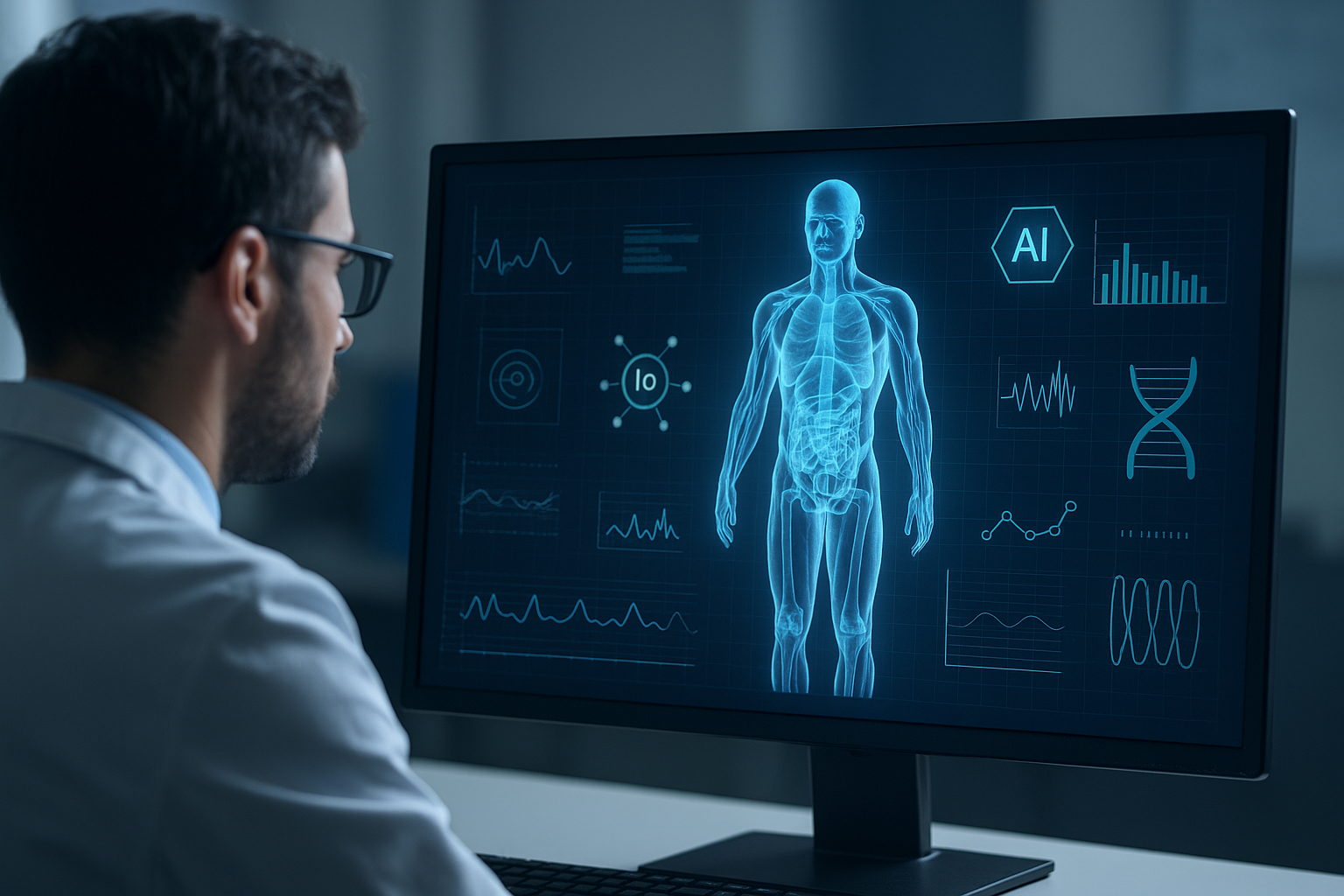AI-powered digital twins pave the way for precision healthcare
Artificial intelligence and machine learning serve as the analytical engines that interpret data inputs. The Internet of Things ensures seamless, continuous data acquisition from wearable devices, while cloud computing supports the storage and computational load required to manage patient models. Together, these components create a virtual platform where disease management can be personalized, proactive, and predictive.

A new review sheds critical light on how digital twin (DT) technology is poised to redefine the landscape of personalized medicine. The study explores the evolution, enabling technologies, real-world use cases, and ethical challenges associated with integrating DTs into healthcare systems.
Titled “Digital Twin for Personalized Medicine Development” and published in Frontiers in Digital Health, the paper offers a comprehensive examination of digital twins as virtual replicas of human patients, dynamically constructed using real-time health data, artificial intelligence, machine learning, and the Internet of Things (IoT). The review also outlines future research directions involving blockchain and cloud infrastructure as essential components for achieving secure, intelligent healthcare solutions.
What are digital twins and how do they work in healthcare?
The concept of digital twins emerged from industrial engineering but has recently gained traction in medicine due to the increasing availability of wearable sensors, electronic health records, and intelligent data-processing algorithms. In a healthcare context, a digital twin is a high-fidelity, data-driven virtual model of a patient. It is constantly updated using real-time biometric, clinical, and lifestyle data to mirror the current state of an individual’s health.
These virtual replicas are more than mere simulations, they are predictive models capable of forecasting disease trajectories, testing treatment efficacy, and aiding in clinical decision-making. By replicating the complexity of human physiology, digital twins allow medical professionals to run “what-if” scenarios and fine-tune therapeutic interventions with a degree of precision unattainable through traditional methods.
The study highlights the crucial enabling technologies behind these systems. Artificial intelligence and machine learning serve as the analytical engines that interpret data inputs. The Internet of Things ensures seamless, continuous data acquisition from wearable devices, while cloud computing supports the storage and computational load required to manage patient models. Together, these components create a virtual platform where disease management can be personalized, proactive, and predictive.
What are the real-world benefits of digital twins for personalized care?
Digital twins are particularly impactful in areas where treatment outcomes vary widely among individuals, such as cancer therapy, cardiology, and diabetes management. These systems can consolidate genomic data, lifestyle habits, and treatment history into a unified patient profile that guides tailored interventions. This results in fewer trial-and-error treatment cycles and more efficient use of healthcare resources.
One of the study’s central arguments is that digital twins empower healthcare systems to shift from reactive to proactive care. Physicians can anticipate disease complications before they manifest clinically, enabling early interventions that may prevent hospitalization or disease progression. Moreover, the ability to test drug responses virtually reduces reliance on blanket prescriptions and opens pathways for patient-specific medication regimens.
The review also points to the broader systemic advantages of integrating digital twins into healthcare. Operational efficiency improves when treatment decisions are optimized for individual patients, reducing unnecessary procedures and enhancing patient satisfaction. The digital model also facilitates collaboration among multidisciplinary teams, as it provides a unified, up-to-date visualization of the patient’s condition.
In addition, digital twins hold promise for clinical research and drug development. By simulating disease pathways and treatment responses across diverse patient avatars, researchers can shorten the time required for clinical trials and identify unforeseen risks or benefits. These capabilities align closely with the goals of precision medicine, which aims to offer the right treatment to the right patient at the right time.
What are the ethical and technical challenges of adopting digital twins?
Despite the immense potential of digital twins in personalized medicine, the study underscores several challenges that could hinder widespread adoption. The first is data privacy. Given that digital twins rely on continuous, sensitive health data streams, securing that information from breaches or misuse is a non-negotiable prerequisite. The paper warns that without strong data governance, the very tools designed to improve health outcomes could inadvertently compromise patient confidentiality.
Another significant challenge is system interoperability. For digital twins to function effectively, they must aggregate data from various sources, including electronic health records, wearable devices, diagnostic imaging, and genomic databases. Achieving seamless integration across these platforms demands standardized protocols and robust APIs - technical features that many healthcare systems currently lack.
Ethical considerations also feature prominently in the study’s analysis. When physicians rely on simulated predictions to guide treatment, questions arise about accountability. For instance, if a treatment fails despite a favorable simulation outcome, who is responsible, the clinician or the algorithm? These dilemmas are not merely hypothetical; they carry serious implications for malpractice law and clinical governance.
Moreover, the use of artificial intelligence in digital twins introduces concerns about algorithmic bias. If the training data used to develop predictive models does not adequately represent minority populations, the digital twin may produce misleading or inequitable results. The study calls for inclusive data collection practices and ethical auditing of AI models to mitigate these risks.
The authors also highlight the need for regulatory frameworks tailored to digital twin applications in healthcare. Existing health technology regulations often lag behind emerging innovations, creating ambiguity around approval processes, quality standards, and clinical validation. Without clear guidelines, both healthcare providers and technology developers face uncertainty about how to implement and scale digital twin solutions responsibly.
Looking ahead, the authors argue that future progress will depend on deeper integration of blockchain technology for secure data handling, advanced cloud infrastructure for scalability, and continued refinement of AI models to enhance predictive accuracy. Collaboration among clinicians, data scientists, policymakers, and ethicists will be essential in translating the promise of digital twins into clinical reality.
- FIRST PUBLISHED IN:
- Devdiscourse










